

Who Were the Phoenicians? Inspired by Egypt, obelisks punctuate a temple in Byblos, Lebanon, that was likely dedicated to the god Reshef about 1800 b.c By that time Egypt had already been trading with the cities of the eastern Mediterranean for at least a thousand years, importing luxuries such as wine, olive oil, and cedar timbers.

In return the Phoenicians acquired Egyptian articles such as gold, scarabs, and stone vases, which have survived as votive articles buried at temples. Egyptian papyrus, on which the Phoenicians kept their records, crumbled to dust long ago. "I am a Phoenician," says the young man, giving the name of a people who vanished from history 2,000 years ago. "At least I feel like I'm one of them. My relatives have been fishermen and sailors here for centuries. " "What will it tell you? " "Your blood contains DNA, which is like a history book," Wells replies. The Latest Underwater Discoveries - Phoenician Wreck.
(Courtesy INA/Mark Polzer) Phoenician WreckCartagena, Spain Dubbed the "princes of the sea" in the Book of Ezekiel, the Phoenicians sailed from their ports in modern-day Lebanon all the way to the Iberian Peninsula in search of precious commodities.

Trading a costly violet-blue dye, Tyrian purple, and exquisite glasswares, these master navigators and merchants filled their holds with silver and other valuables from about 1200 to 300 B.C. But archaeologists have uncovered little evidence of these ships apart from depictions on reliefs, or much direct proof of the vast extent of their trade networks. Now, a discovery off the coastal city of Cartagena in southeast Spain by archaeologists Mark Polzer and Juan Pinedo of Texas A&M University promises to fill many gaps in our knowledge.
On a more human level, the artifacts also promise to tell us much about the diets and lives of Phoenician sailors. More Underwater Discoveries Share. Phoenician alphabet and language. Origins.
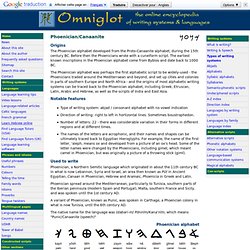
Phoenicians @ National Geographic Magazine. Phoenicians: Sailing Away. The Phoenicians used cuneiform but later developed their own alphabet.

This famous sequence of letters known to much of the world dates back to the 16th century B.C.E. Ancient Egypt for Kids. The story of ancient Egypt has survived for thousands of years.
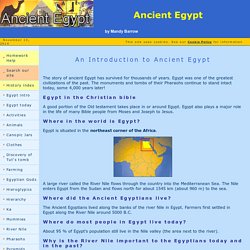
Egypt was one of the greatest civilizations of the past. The monuments and tombs of their Pharaohs continue to stand intact today, some 4,000 years later! A good portion of the Old testament takes place in or around Egypt. Egypt also plays a major role in the life of many Bible people from Moses and Joseph to Jesus. Ancient Egypt - Ancient Civilizations for Kids. North Africa Geography North Africa's landscape is covered by the world's largest hot desert--the Sahara.

This massive Arid climate makes it a strange place for a large population of people. Most of the Sahara is too harsh for people to live. The Nile Valley, coastal areas, and the rare oases (plural for oasis) provide the only places that can support life. An oasis is an area of natural water in a desert that allows plant life. For thousands of years the Nile has flooded when the rainy season begins in central Africa. Early History The oldest human fossils have been found near North Africa, but the land was very different 200,000 years ago. 10,000 years ago North Africa was a grassland with many plants and animals. Egyptian Civilization Starting around 5500 BCE two major kingdoms developed along the Nile. AncientEgyptMap.jpg (JPEG Image, 841x1474 pixels) Roman Republic. The Roman Republic (Latin: Res Pvblica Romana) was the period of the ancient Roman civilization when the government operated as a republic.
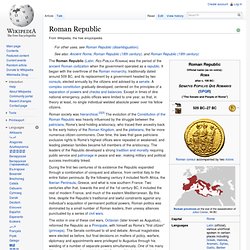
It began with the overthrow of the Roman monarchy, traditionally dated around 509 BC, and its replacement by a government headed by two consuls, elected annually by the citizens and advised by a senate. A complex constitution gradually developed, centered on the principles of a separation of powers and checks and balances. Except in times of dire national emergency, public offices were limited to one year, so that, in theory at least, no single individual wielded absolute power over his fellow citizens. List of Roman deities. A vast number of ancient Roman deities are known by name.
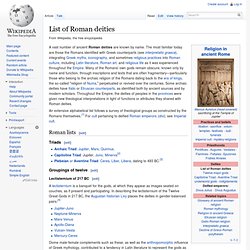
The most familiar today are those the Romans identified with Greek counterparts (see interpretatio graeca), integrating Greek myths, iconography, and sometimes religious practices into Roman culture, including Latin literature, Roman art, and religious life as it was experienced throughout the Empire. Many of the Romans' own gods remain obscure, known only by name and function, through inscriptions and texts that are often fragmentary—particularly those who belong to the archaic religion of the Romans dating back to the era of kings, the so-called "religion of Numa," perpetuated or revived over the centuries. Some archaic deities have Italic or Etruscan counterparts, as identified both by ancient sources and by modern scholars. Ancient Greece Facts for Kids. The Ancient Greeks. THEOI GREEK MYTHOLOGY, Exploring Mythology & the Greek Gods in Classical Literature & Art.
Welcome to Odyssey Online: Greece. Ancient region, Africa. Nubia, NubiaEncyclopædia Britannica, Inc.ancient region in northeastern Africa, extending approximately from the Nile River valley (near the first cataract in Upper Egypt) eastward to the shores of the Red Sea, southward to about Khartoum (in what is now Sudan), and westward to the Libyan Desert.
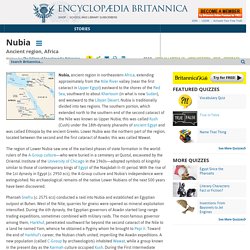
Nubia is traditionally divided into two regions. Ancient Africa for Kids: Kingdom of Kush (Nubia) History >> Ancient Africa The Kingdom of Kush was an ancient civilization in Africa.
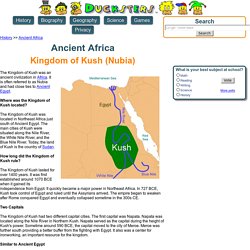
It is often referred to as Nubia and had close ties to Ancient Egypt.